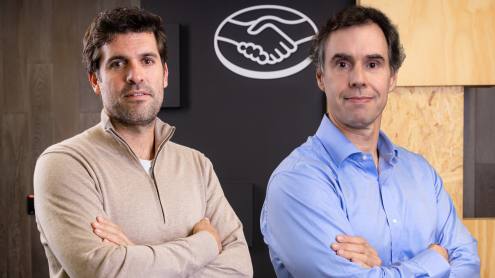ING Direct, part of Amsterdam-based ING, is the largest direct bank in the world, operating in nine countries. Not only is its growth rate impressive, with more than 13.5 million customers acquired since its launch in Canada in 1997, but also the business model is surprisingly simple: keep costs down, offer a select number of basic financial products over the internet and phone, and be passionate about delivering superior customer service. Essentially, the customer is at the heart of everything the company does.
Arkadi Kuhlmann, president and CEO of ING Direct USA, says that he is well aware that a number of other financial institutions have tried to make a go of direct banking and failed. “ING Direct set out from the beginning to create a distinctive banking experience that would be unique in its space and highly appealing to consumers,” he says. “We did that by keeping costs low so customers could enjoy higher returns, and by measuring our performance at every customer touch point.
“Numbers don’t lie, so we track everything from how long it takes a web page to be sent to a user’s computer to the number of seconds it takes us to answer the phone,” he adds.
Real-time data
ING Direct carries its customer-centric approach over to marketing and sales as well. The company is one of the leading financial institutions utilising real-time data to predict customer behaviour better, allowing the firm’s sales associates to cross-sell highly targeted solutions. Because ING Direct conducts ‘inbound’ selling, offering additional products only when customers contact it, the real-time aspect of its customer database has given it a significant marketing and competitive advantage.
To power its innovative business model, ING Direct chose Profile, a real-time, integrated core banking system from Fidelity Information Services. The Profile infrastructure enables the firm to deliver a simple and efficient customer experience, whether the customer is at ingdirect.com or on the telephone with a sales associate.
“Traditional banking technology organised information around products, not customers,” says ING Direct deputy CIO Wijnand de Kruijff. “This meant banks had to maintain multiple information warehouses, which is an expensive proposition. Instead, we have designed our infrastructure around the customer, utilising a centralised database that supports all our distribution channels.”
The results
Global financial results for ING Direct in the first half of 2005 were enviable, with a 25.1% increase in pre-tax profit to €254m and an addition of 1.8 million new customers across the US, Canada, Germany, France, Spain, Italy, the UK and Australia. The company’s mortgage portfolio grew by €9.8bn to €49.2bn.
Mr Kuhlmann says that the basic principles behind ING Direct’s success are transferable to any company. “We enthusiastically invest in highly targeted marketing and the kind of technology infrastructure we need to operate economically,” he says. “But ultimately, ING Direct is about passionate customer service and a superior banking experience.
“We not only measure the details of our interactions with our customers, but we incentivise everyone in the company to meet and exceed customer expectations every day,” he says.
Most agree that ING Direct has raised the bar for customer-centric banking, and the industry has taken notice. As millions of customers embrace the company’s powerful value proposition, ING Direct has given many financial institutions a view into their own future.






